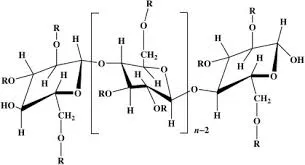
Nov . 30, 2024 07:59 Back to list
Applications and Benefits of Redispersible Polymer Powder in Construction and Industry
The Versatile Uses of Redispersible Polymer Powder
Redispersible polymer powder (RDP) has become an essential component in various industries due to its unique properties and versatility. This fine polymer powder can be mixed with water to form a polymer dispersion that enhances the performance of many construction and building materials. By understanding its applications and benefits, we can appreciate why RDP is increasingly gaining popularity across different sectors.
What is Redispersible Polymer Powder?
Redispersible polymer powder is produced by spray-drying a solution of synthetic polymers. When the powder is mixed with water, it forms a stable latex that can significantly improve the adhesion, flexibility, water resistance, and durability of construction materials. Typically made from polymers like styrene-acrylic, ethylene-vinyl acetate, or vinyl acetate-ethylene, RDP serves as a binder in various applications.
Applications in Construction
1. Tile Adhesives One of the most common uses of RDP is in tile adhesives. The incorporation of RDP in tile mortar enhances the bonding strength between tiles and substrates, making it particularly effective for challenging applications, such as wet areas or exterior installations. Its water retention properties allow the adhesive to remain workable longer, ensuring that tiles can be adjusted before setting.
2. Cement-Based Products RDP is widely used in cement-based materials, such as grouts, renders, and lightweight plaster. In these applications, RDP improves the flexibility and tensile strength of the mixtures, making them less prone to cracking. Furthermore, the addition of RDP contributes to better water resistance, which is crucial for outdoor applications or areas exposed to moisture.
3. Self-Leveling Compounds Self-leveling underlayments and compounds benefit significantly from RDP. The polymer powder gives these products enhanced flow, improving leveling properties. Additionally, RDP enhances the adhesion of self-leveling compounds to a variety of substrates, ensuring long-lasting performance.
redispersible polymer powder uses

4. Mortars and Rebates In masonry and construction, RDP is used in mortars and rebated plaster to improve workability and adhesion. The use of RDP allows for faster application and setting times, which is advantageous in both residential and commercial construction projects.
Benefits of Using RDP
1. Improved Performance The incorporation of redispersible polymer powder leads to better mechanical properties of the final product. It offers enhanced flexibility, impact resistance, and tensile strength, which are critical for ensuring the longevity and durability of structures.
2. Water Resistance RDP provides excellent water resistance, making it an ideal choice for applications in areas exposed to moisture, such as bathrooms, kitchens, and outdoor settings. This property helps in preventing damage from water infiltration and contributes to the overall durability of the installed materials.
3. Ease of Application With RDP, construction materials become easier to apply, leading to faster project completion. The improved workability allows for better manipulation during application, reducing the risk of errors.
4. Versatility The adaptability of redispersible polymer powder makes it suitable for a wide range of uses beyond traditional construction. It is increasingly being utilized in the production of paints, coatings, adhesives, and even in the textile industry for fabric finishing.
Conclusion
Redispersible polymer powder is a vital ingredient that enhances the performance of various construction materials. Its wide-ranging applications in tile adhesives, cement-based products, self-leveling compounds, and more demonstrate its versatility and importance in modern construction practices. By improving key properties such as adhesion, flexibility, and water resistance, RDP contributes to creating structures that are not only efficient to build but also durable and long-lasting. As the construction industry continues to evolve, the role of RDP is likely to expand, making it an essential component for future developments.
-
Versatile Hpmc Uses in Different Industries
NewsJun.19,2025
-
Redispersible Powder's Role in Enhancing Durability of Construction Products
NewsJun.19,2025
-
Hydroxyethyl Cellulose Applications Driving Green Industrial Processes
NewsJun.19,2025
-
Exploring Different Redispersible Polymer Powder
NewsJun.19,2025
-
Choosing the Right Mortar Bonding Agent
NewsJun.19,2025
-
Applications and Significance of China Hpmc in Modern Industries
NewsJun.19,2025







